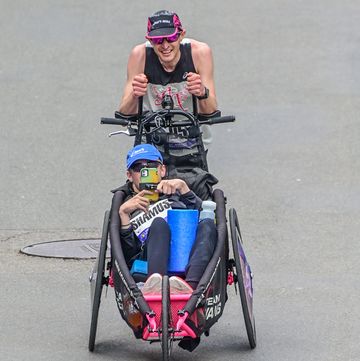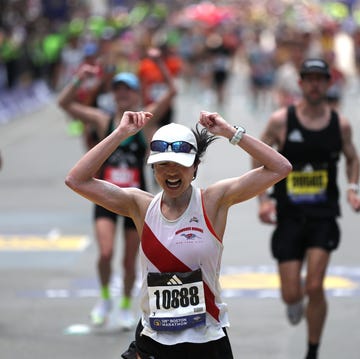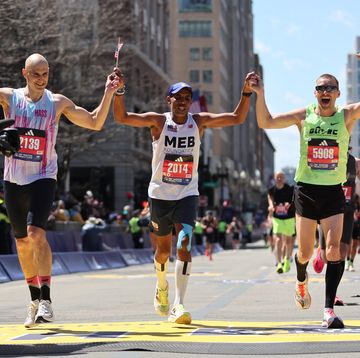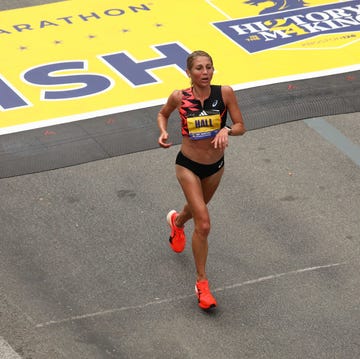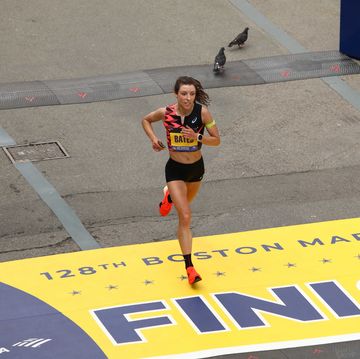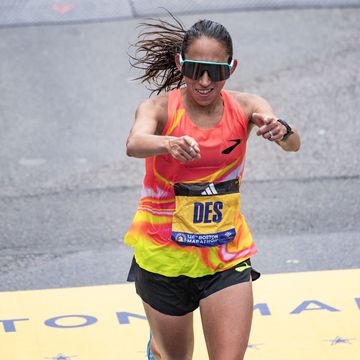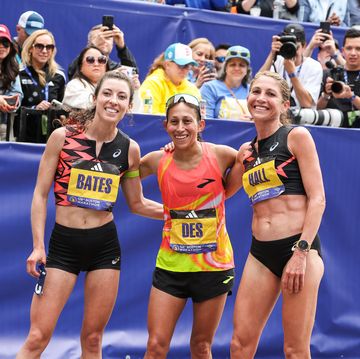This article has been updated.
On March 2, the Boston Athletic Association (BAA) made a big announcement: It will hold a virtual Boston Marathon this fall for the first 70,000 people to register.
And on March 15, a second announcement: The in-person Boston Marathon in October will have a field size of 20,000 runners, smaller than the 33,000 or so in a typical year.
These two pieces of information are related—and affect the choices runners might make.
First, the virtual race is a new offering, and it’s open to anyone. After last year’s in-person race was postponed and then canceled due to COVID-19, only people who were already entered to run Boston in 2020 were allowed to do the 2020 virtual race.
This year, potential entrants don’t have to worry about qualifying times, cutoff points, or raising five-figure dollar amounts for a charity bib. Taking the virtual route, any runner could earn a medal from the iconic race, which has long been seen as an exclusive club for the sport’s most competitive athletes.
And it’s an intriguing option for those runners who have run a qualifying time for Boston since September 15, 2018, but who doubt they are fast enough to get one of the bibs for the smaller-than-usual in-person race.
(If you answered yes to the question above, please respond to the second question below. If your answer was no, please skip to the third question on this page.)
Still, much remains uncertain about the 2021 in-person and virtual events.
Here’s What We Know
→ The in-person Boston Marathon, typically held every April, has been moved to Monday, October 11. It’s the day after the scheduled date for the Chicago Marathon.
→ The virtual race will accept up to 70,000 runners, all of whom can earn the classic medal. “For the first time in our history, most everyone will have the opportunity to earn a unicorn finisher’s medal for every BAA race in 2021—no matter whether they choose to walk or run,” said Tom Grilk, president and CEO of the BAA in a statement. The virtual race will need to be completed in one continuous attempt.
→ The field size for the in-person event is 20,000 runners. The BAA has said they were trying to keep the proportion similar to past events, 80 percent qualifiers/20 percent running for charities. That would mean 16,000 qualifiers and 4,000 charity runners.
Here’s What We Still Don’t Know
→ What will the cutoff time be for entry into the in-person race? The cutoff—the time by which a Boston hopeful has to be faster than his or her qualifying time—was 1:39 for the 2020 race that never happened. With a smaller field, it’s likely to be much greater. Registration runs from April 20–23 for people who have qualified, and applicants will likely find out within a few weeks if they’ve been accepted into the race.
→ How much will it cost to enter the virtual marathon?
→ What will the qualification window be for the April 2022 in-person Boston Marathon? As marathons have been largely nonexistent during the pandemic, will smaller numbers of runners have qualifying times for next year’s race, giving them a better chance of gaining entry?
Even with the uncertainty, a chance to earn a Boston medal is appealing to many runners. Take our polls to let us know what you think about Boston 2021.
For those who won’t attempt to register for a virtual Boston, why not?
What do you predict the cutoff will be for the in-person event?
One final question:
Have more to say? Let us know in the comments below.

Sarah Lorge Butler is a writer and editor living in Eugene, Oregon, and her stories about the sport, its trends, and fascinating individuals have appeared in Runner’s World since 2005. She is the author of two popular fitness books, Run Your Butt Off! and Walk Your Butt Off!






